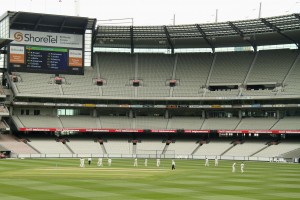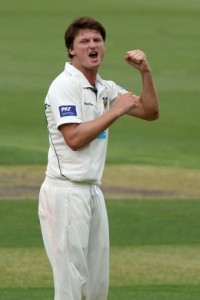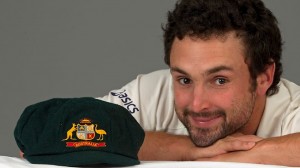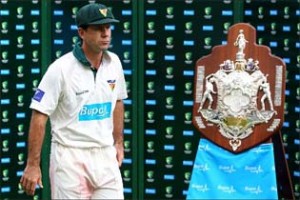
A gradual but inevitable descent into cricket-based loathing and bile.
Sheffield Shield Final 2012 Review
The Sheffield Shield is, its fair to say, a strange beast. Most Australian cricket fans will vehemently defend the quality of their national domestic competition and praise it as the strongest in the world. Yet the chance of any of them having ever actually watched a game are practically zero. Unlike the English county system where a loyal following exists (the new season of which is about to begin and will be covered in impeccable detail as usual here on 51allout), all state teams in the Sheffield Shield inevitably play in front of empty stands.
This creates the strange juxtaposition in that the majority of cricketers in this country are virtual unknowns unless they break into one of the national squads. The success of the Big Bash this season has changed this dynamic somewhat, but the fact still remains that when Peter Nevill was called up to replace Brad Haddin in the West Indian tour squad, the typical response was, “Peter who?”.
It wasn’t always thus, of course, and up to the 40’s and 50’s the stands were full every game. In those days, however, international tours of Australia were far less frequent affairs than now, with typically only the English making the long voyage down-under every four years or so, with sometimes no other visitors in-between. Which is one reason why the SCG, which celebrated hosting its 100th Test the summer past, is 22 Tests behind the number played at Lords, despite having hosted its first official Test match two years earlier than the London ground. In between Ashes contests, as a result, the domestic game often ruled the summer unchallenged.
Without wanting to sound too much like a tired old gasbag, it was them new fangled aeroplanes that changed everything. Suddenly Australia wasn’t as remote as it’d previously been and, in particular, the always popular West Indian team seemed to be touring these shores every other year. Compared to this new glut of international cricket, domestic fare began to appear second rate. Even the introduction of big name foreign players into the competition, such as Joel Garner and Viv Richards, failed to restore its lustre. Which is, in a rather long winded and roundabout way of saying, why the decision by Foxtel last week to ditch telecasting the Sheffield Shield Final, meaning it would be without any television coverage at all, was met with universal apathy on these shores.*
Despite the lack of public interest, the Shield Final remains the most important domestic contest of the season. Played over five days, it is a true Test match experience. This year it was a contest between easily the two best performing teams in the country. The Queensland side, despite missing its top run scorer of the season, Peter Forrest, and its main bowling threat, Ben Cutting, through international duty and injury respectively, contained former Australian ODI space filler James Hopes and new bowling sensation, Alister McDermott. The Tasmanians were likewise missing one of their main batsmen through international duty, George Bailey, but could boast of a squad containing Ed Cowan, Ricky Ponting, Jason Krejza and this season’s top wicket taker (and owner of its best name) Jackson Bird. With the Tasmanians having the edge in quality, but the Queenslanders the advantage of home conditions, it promised to be an even contest. And so it proved.
Batting first on a slightly green pitch under overcast conditions the Tasmanians patiently compiled 130 runs after 40 overs, for the loss of only one wicket. Then all hell broke loose as McDermott ripped through the middle order. The tail offered some resistance late in the day but were quickly mopped up on the second morning, and McDermott finished with six wickets, as Tasmania were rolled for 241. Queensland would have been hoping to post a substantial first innings lead, but instead their top order capitulated, and at one stage were 55/5, with Butterworth and the all-rounder Faulkner the main destroyers.
A lower order revival dramatically shifted the scene however, with a century to ‘keeper Chris Hartley guiding Queensland to 276 and an improbable first innings lead. With the conditions distinctly more favourable to batting than on the previous two days, Tasmania looked set to post a competitive total for Queensland to chase. That is till the seventh ball of the innings had opener Steven Cazzulino flashing outside off and edging into the slips. Cue a collapse that saw Tasmania collapse to 35/4, highlighted by Ponting falling in typical fashion by playing all around his front foot and having his off stump removed by Hope. A return of 6 and 1 was not the contribution hoped for from the ex-Test captain.
At this point the game began to shift once again as Cowan, in true Cowan fashion, slowly rebuilt the Tasmanian innings whilst the commentators amused themselves telling anecdotes about the size of David Boon’s genitalia. We kid you not. Radio commentators in the antipodes are a strange lot. Just ask Bryan Waddle about his missing ice cream. Anyway, on the fourth morning the Tasmanians held a 100 run lead with four wickets in hand and the game was in the balance. An inspired spell by Hopes changed all that, removing Cowan and quickly mopping up the tail, as Tasmania were felled for 167. Queensland, with a target of 133 to lift the Shield for the first time since 2005/6, were now clear favourites.
Despite a few early hiccups, the hosts appeared to be cruising towards the title at 82/2. Then pandemonium ensued and in the space of a handful of overs they lost 5/5. The equation was now 50 runs to win with three wickets in hand. Advantage Tasmania. However, as the weather closed in and threatened to drag the game out to a fifth day, some big hitting from the Queensland tail, and another solid innings from Hartley, saw Queensland inch home. Helped enormously, it must be said, by a number of dropped catches from the Tasmanian fielders.
Ultimately Queensland were worthy victors, having batted far better than the visitors, who could not adapt to conditions and suffered far too many dismissals behind the wicket. It was otherwise a memorable encounter, where neither side held the advantage for long, and provided further amusement to those few sick people who enjoy seeing Ponting lose. The match also offered a platform for a number of players to stake their Test credentials, not the least being Chris Hartley, Alister McDermott and James Faulkner, who all may have forced their way into the selectors plans. Cowan also impressed in occupying the crease for long periods, but did little to dispel doubts about his ability to maintain scoreboard pressure on the opposition.
It was, by any measure, an epic contest that was a fine testament to the continuing high standard of the Australian domestic competition. It served on the one hand to demonstrate the depth of Australia’s fast bowling stocks at the moment, and on the other the scarcity of batsmen capable of countering the swinging ball. Its just a pity that so few people would have bothered to take the time to appreciate it.
*In the end a deal was negotiated between Foxtel and Cricket Australia and the game was eventually shown on pay television. We bet nobody bothered watching anyway.





No Comments
Post a Comment